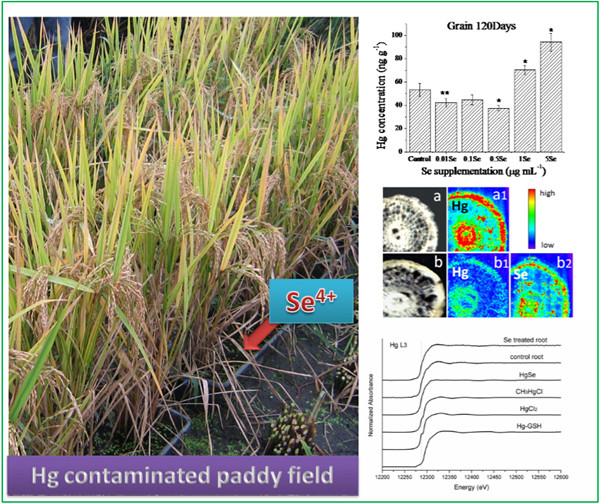On the basis of lab tests, a group of IHEP scientists carried out an on-site experiment in Guizhou Province adding selenium to the polluted rice fields, which successfully reduced mercury accumulation in rice.
The success provides a new way to improve rice quality in the polluted areas, and greatly reduces the health risks facing the local residents. It is reported that there are 360 hectares of mercury-polluted lands in Qingzhen, only a small town in Guizhou Province. There, rice is the most important food to the local residents.
There are many ways to improve the soil quality, such as changing soil, thermal desorption and other chemical and botanical methods, but all those take much longer time and more money, and under certain circumstances, land use has to be changed. In view of these, scientists put forward an innovative way to improve soil quality without having to change the land purposes, that is to use selenium to reduce mercury accumulation in rice. Selenium is an element that human body can not dispense with, it bears significance to life functions.
With a piece of land in Qingzhen, the experiment adding selenium to the polluted rice soil lasted one year. The result shows that adding selenium can not only raise rice production but also reduce mercury accumulation in rice stalks and grains. By synchrotron radiation technologies, scientists also explored the mechanism of how selenium can reduce mercury accumulation in rice.
For more details, please refer to the paper The concentration of selenium matters: A field study on mercury accumulation in rice by selenite treatment in Qingzhen, Guizhou, China published on the journal Plant and Soil.
Link to the paper: http://link.springer.com/article/10.1007/s11104-015-2418-4

Selenium Successfully Applied to Reduce Mercury Accumulation in Rice (image by IHEP)